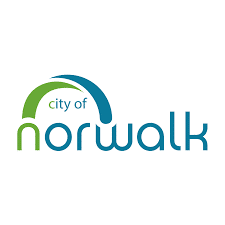Power Breakfast preview: How to maneuver a changing, uncertain lending environment

Companies and entrepreneurs entered 2024 with some positive economic indicators, including strong consumer spending and continued GDP growth, but many are watching and waiting for the Federal Reserve to take action on lowering high interest rates. The effects on lending, borrowing costs and access to capital could determine a business’s growth strategy for the next 12 months.
At our upcoming Power Breakfast, we’ll hear from industry experts on what to expect from a challenging banking and lending climate.
Event details:
Thursday, Feb. 15, 2024 | 9 a.m. networking; 9:30 to 11 a.m. program
Location: Des Moines Heritage Center, 120 E. Fifth St., Des Moines | Register here
Who’s on the panel?
- Don Coffin, president and CEO, Bankers Trust
- Vince Lintz, executive director, One Economy Financial Development Corp.
- John Sorensen, president and CEO, Iowa Bankers Association
- Murray Williams, president and CEO, Iowa Credit Union League
In advance of the event, we asked the panelists: What will be the most important development this year in banking and lending that businesses large and small, startup and legacy should be thinking about when considering operating and growth strategies?
Here is what they said.
Coffin: The most important development this year in banking and lending is that the U.S. economy does not appear to be headed into a prolonged recession. Instead, a temporary economic slowdown or mild recession at worst is now forecasted by many. The expectation now is that the Federal Reserve will gradually lessen its economic tightening campaign and slowly lower its benchmark interest rate throughout 2024 and 2025. This will eventually give business leaders greater confidence to pursue a growth strategy and discard the “bunker” mentality that was prevalent last year when fears of a “hard landing” were forecasted.
Lintz: From an executive director of a nonprofit organization working with minority small businesses, the most important development in the coming year is interest rates and where they are headed. One of the biggest hurdles for small businesses is gaining access to capital, especially minority small businesses. As interest rates rise, so does the cost of doing business, with higher cost on business loans and credit cards. Not only does it increase the business cost, it decreases the consumer’s buying power, which equates to lower sales and profits. Small business owners need to become better educated for operating in a higher-interest-rate environment. They need to understand how to adjust their business model to meet increased costs related to their business cost. Lending institutions have to take into account their increased risk by imposing tougher lending requirements while at the same time meeting the regulatory requirements.
Sorensen: An important matter for bank customers is whether the Federal Reserve lowers borrowing costs in 2024. Although investors are pricing in multiple Fed rate cuts, the follow-through will be data dependent. Employment and consumer spending are strong, but slowing, and inflation is falling back toward 2%. At the Fed’s most recent meeting, they left rates unchanged – at a 23-year high – but removed their bias toward tightening. The tsunami of new banking regulations coming from Washington, D.C., also impacts lending. There was a time when the priorities of financial regulators didn’t blow with the political winds. This is no longer true. The Federal Reserve’s Basel III Endgame proposal could dramatically increase capital [that] banks would need to hold to back certain lending and investment activities. And new [regulations] implementing Dodd-Frank Section 1071 would require lenders to collect and share sensitive information on small-business borrowers with the Consumer Financial Protection Bureau. The risks to economic growth and customer privacy far outweigh the uncertain benefits of these proposals.
Williams: As member-owned, cooperative financial institutions, Iowa’s credit unions are highly focused on meeting the borrowing and saving needs of our 1.6 million members. Today, our members have less spending power due to increased cost of goods and services, and they are borrowing less due to higher interest rates. As a result, members have been dipping into savings to maintain their current level of consumption spending. This environment is having a direct impact on consumer and small-business financial well-being. Another trend is the increasing use of artificial intelligence in financial services. It is critical for organizations to remain both innovative and cautious while implementing AI strategies, especially considering data security. Additionally, fraud continues to pose a rising threat to all organizations. Fraudsters are becoming more sophisticated, so it is critical for financial institutions to keep up with cybersecurity technology, as well as be on the front lines in educating consumers regarding fraud and cybersecurity risks.

Mike Mendenhall
Mike Mendenhall is associate editor at Business Record. He covers economic development, government policy and law.










